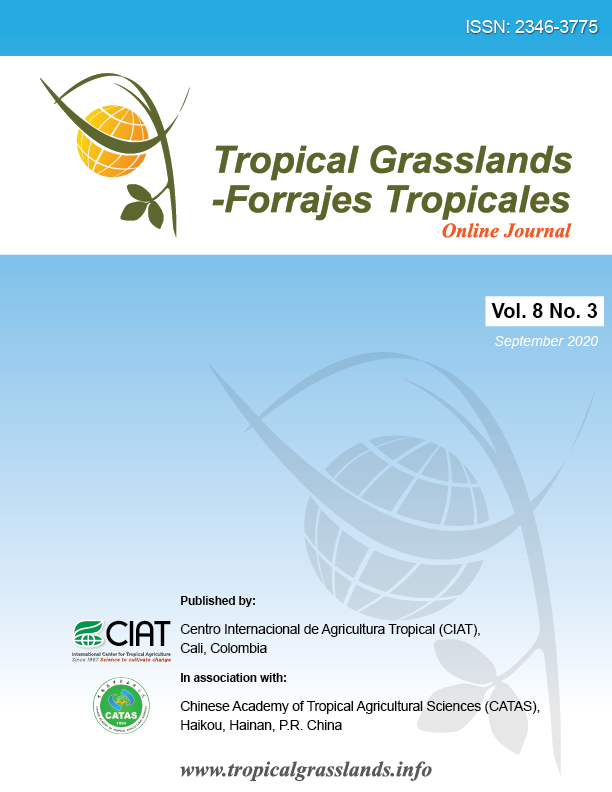Chlorophyll concentration and production of <i>Urochloa decumbens</i> treated with diazotrophic bacteria and thiamine in the Brazilian Cerrado
DOI:
https://doi.org/10.17138/tgft(9)134-137Abstract
The effects of application of Azospirillum brasilense and thiamine on chlorophyll concentration and forage mass of Urochloa decumbens were evaluated in a small plot experiment conducted in Goiânia, Goiás, Brazil. The treatments were applications of: A. brasilense (concentration of 10 mL/L); thiamine at 2 concentrations: 50 and 100 mg/L; combinations of A. brasilense and thiamine at the 2 concentrations; and a Control treatment (untreated grass). At the first harvest there was a trend for applying A. brasilense, either alone or in combination with thiamine, to increase the concentrations of chlorophyll, but differences were not always significant at P<0.05. Dry mass of forage from applying A. brasilense plus thiamine at 100 mg/L was greater than that for Control and thiamine at both concentrations. At the second harvest, chlorophyll concentrations were not affected by treatment (P>0.05), while dry matter production of forage from applying A. brasilense alone and thiamine at 100 mg/L was greater (P<0.05) than that of Control and thiamine at 50 mg/L. Larger-scale and longer-term studies to validate these preliminary findings are needed.




